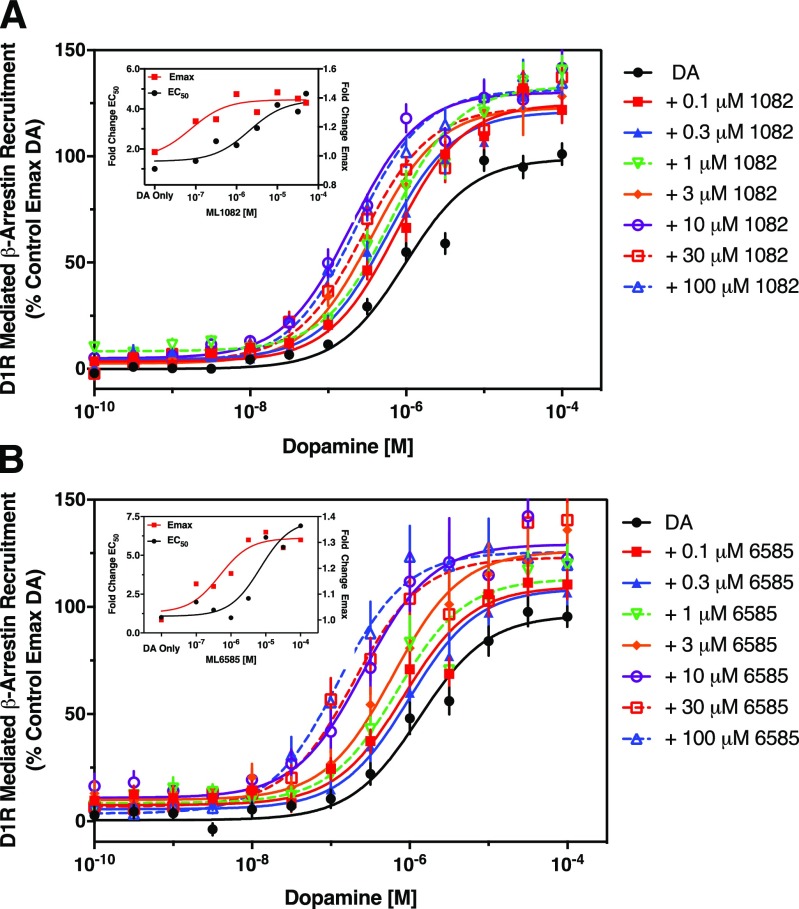Fig. 4.
MLS1082 and MLS6585 increase dopamine’s potency and efficacy as measured in β-arrestin recruitment assays. Increasing concentrations of MLS1082 (A) or MLS6585 (B) were used to potentiate dopamine-stimulated β-arrestin recruitment. The maximum shift potentiated by MLS1082 was a 4.96 ± 0.29-fold increase in the EC50 for dopamine (P < 0.001 vs. DA control, paired Student’s t test) and an Emax value of 121.7% ± 12.9% (P = 0.017 vs. DA control, paired Student’s t test). MLS6585 potentiated the EC50 for dopamine by 9.7 ± 3.4-fold (P = 0.045 vs. DA control, paired Student’s t test) and showed an Emax increase of 122.4% ± 11.4% (P = 0.0093 vs. DA control, paired Student’s t test). Data are displayed as a percentage of the maximum control stimulation seen with dopamine, mean ± S.E.M., n = 6–8 of experiments run in quadruplicate. Insets illustrate the concentration-dependence effects of each PAM on the DA EC50 and Emax values, showing that the PAMs appear more potent at increasing DA efficacy than potency for this signaling output.

